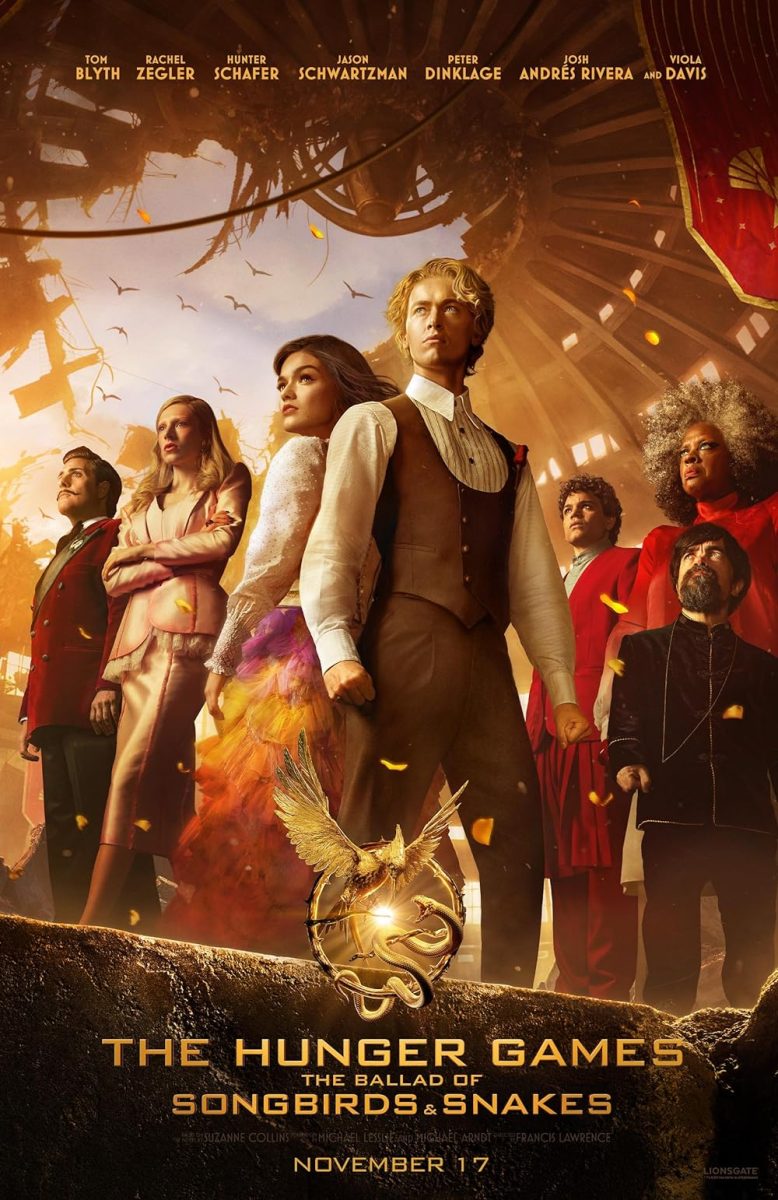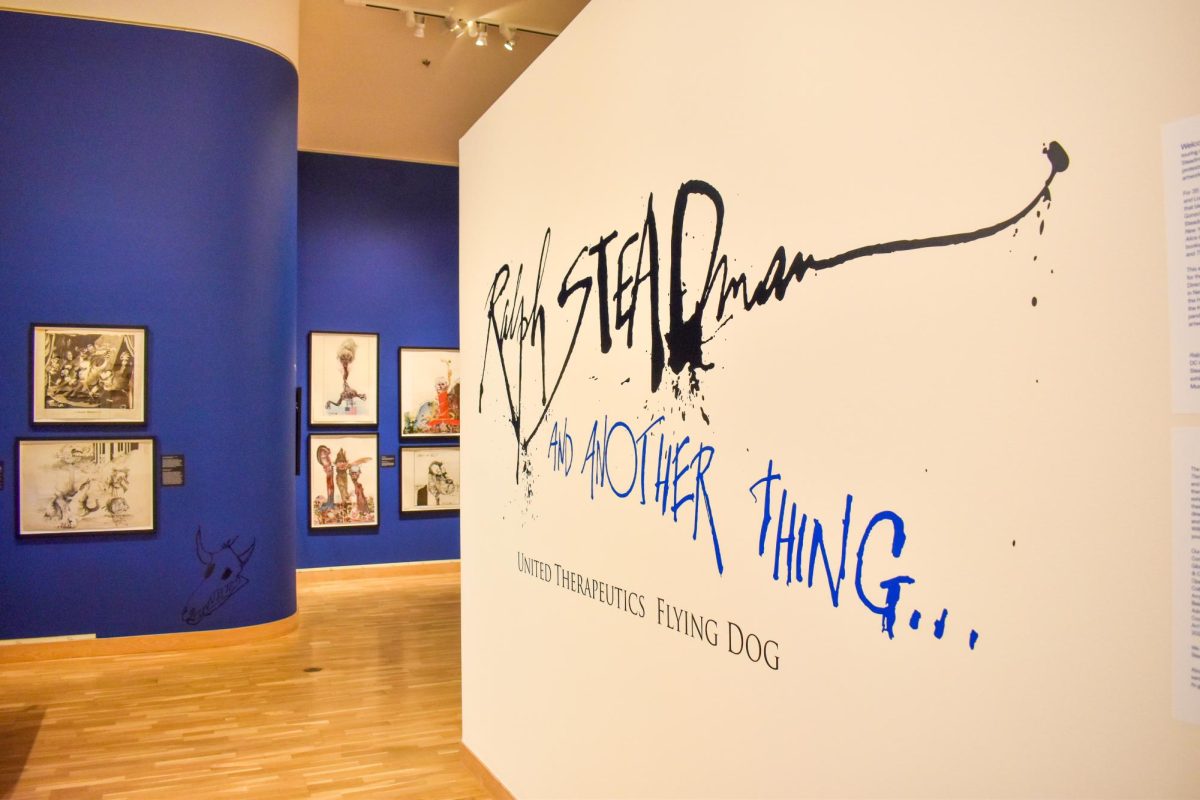As many young adults on TikTok will tell you, The Hunger Games has long been an eerie reflection of our modern world. The idea that capitalist interests can go so far that they become a weapon of absolute tyrannical power or that climate change can permanently shift the landscape so far as to permanently cut America off from the world are terrifying, yet hauntingly accurate – and perhaps that’s why The Hunger Games is so popular.
Earlier this year, as the first teasers for The Hunger Games: The Battle of Songbirds and Snakes were released, the series had a sudden renaissance. This is when I first, finally, binged the series – first the movies, and then the books (wrong order, I know, I’m sorry). And when I was done with it all, I picked up The Battle of Songbirds and Snakes.
What we know of post-apocalyptic Panem’s history before the original Hunger Games trilogy, from protagonist Katniss’ perspective, is limited. But in her 2020 prequel novel The Ballad of Songbirds and Snakes, series author Suzanne Collins gave us a window into a pre-affluent version of the infamous Capitol, where the cruelty of the Hunger Games — a televised fight to the death between children randomly selected from the outlying Districts, as punishment for the Districts’ attempted rebellion — was originally manufactured. With the release of the movie adaptation in November, Hunger Games fans can now see this epic tale on the big screen.
Just like every previous Hunger Games film, The Ballad of Songbirds and Snakes is artfully made and devastatingly traumatizing.
In this early Capitol, not all are wealthy and the Hunger Games are not yet the major spectator sport they’ll come to be – but that doesn’t mean the world is any less dystopian. The Capitol hasn’t reached a level of haunting shininess yet; instead, an opening sequence features dirty young Coriolanus and his cousin Tigris, who observe another man resort to cannibalism. In this gritty, war-torn land, fear of regression to the “Dark Days” makes people hungry for rebels’ blood, which sets the stage for a gruesome reliance on the Games.
So main character (note: not protagonist) Coriolanus Snow (Tom Blyth), future president of Panem, is not actually drowning in money the way Capitol elites are expected to be. Fighting for a chance at a scholarship called the Plinth Prize to continue to university, Coriolanus is willing to do basically anything. Which sets him up as the perfect anti-hero.
In a new scheme assigning Capitol children to mentor tributes in order to increase spectacle and public engagement with the Games, Coriolanus is matched with mentor District 12 female tribute Lucy Gray Baird (Rachel Zegler), who he assumes to be the weakest of the bunch. What no one expects, however, is Lucy Gray’s fiery attitude and charm. When her name is read at the Reaping, she dumps a garter snake down another girl’s dress and sings straight to the television cameras.
A switch clicks for Coriolanus here. Rather than truly caring for Lucy Gray’s survival, he immediately understands the quality of the show she can put on for the world — and the benefits that this public entertainment would have for him. And thus, we witness Coriolanus’ descent into abject tyranny.
Coriolanus goes from seeking his own power to wrapping himself up the idea of Capitol superiority. Turning his nose down at anyone “district,” he begins to see the Games for what they are: a media spectacle to distract and entertain Capitol citizens all while keeping district citizens terrified into submission. Thus, like previous Hunger Games films, The Ballad of Songbirds and Snakes is a warning tale against media docility – and how what we publish and view as entertainment reinforces structures of class, race and supremacy. In this dystopian world, killing children is considered entertainment. The fact that it seems even slightly resonant to current media culture is a bright red flag.
Our experience of The Ballad of Songbirds and Snakes is framed by what we already know. We know Coriolanus will be President of Panem by the time Katniss comes around. We know many of Lucy Gray’s songs will be sung by Katniss and District 12 decades later. We know Coriolanus will exile his beloved cousin, Tigris (Hunter Schafer), by the time the next revolution occurs. Collins doesn’t directly tell us how these events will come to pass, which makes The Ballad of Songbirds and Snakes all the creepier.
Coriolanus grows to care for Lucy Gray, but regardless, his priorities do not shift. Instead, his thoughts and intentions give us a clear window into how the disturbing fan culture around the Games in Panem came to be. Through his work with Head Gamemaker Dr. Volumnia Gaul (Viola Davis), Coriolanus fosters a new version of the Games that are far more punishing. Now, tributes are meant to put on a true show. They will be bet upon and made to suffer in new ways. By the end of the film, he is the President Snow we see in the original trilogy, and the Capitol is becoming the place of true elitism and tyranny we know it to be.
It’s more of a horror story in this way, as we see how quickly elitism can turn into terror. Sure, Coriolanus isn’t as wealthy as other Capitol citizens, but at least he’ll never be “district,” as he puts it. Meanwhile, his friend Sejanus Plinth (Josh Andres Rivera) originally hails from District 2 – and Coriolanus sees him as lowly for this reason, continuously disregarding him and even betraying him outright all for the sake of getting to the top.
Regardless of all of this, Coriolanus is still our main character, and we’re meant to see him. And see him we do – although not as well as in the novel, where we can read right from the start just how corrupt his thought process has become well before he actually betrays Sejanus and Lucy Gray. He’s not a character we want to root for, although we do anyways because he’s who we’re given.
The Ballad of Songbirds and Snakes has far darker themes even than the original trilogy and is therefore far more brutal. While avoiding R-rated gore, the movie still showcases extreme violence that, in my opinion, goes beyond that of the older movies. When I first read The Ballad of Songbirds and Snakes, I took it as a book written for older Hunger Games fans – and the movie affirmed that for me. While not gratuitous, the violence illustrated was very real and occasionally overwhelming.
As a commentary on the dangers of modern society, The Ballad of Songbirds and Snakes is an utter masterpiece. Near-flawless performances from young actors and artistic cinematography combine to make it one of the most cinematic Hunger Games films yet.









